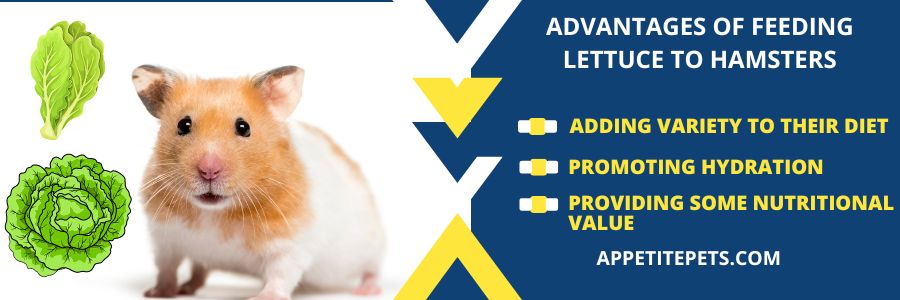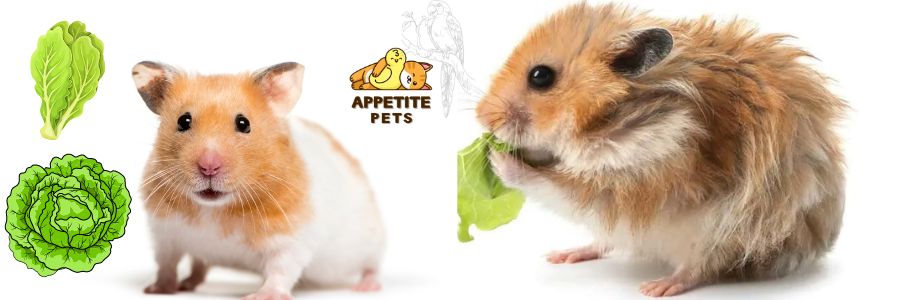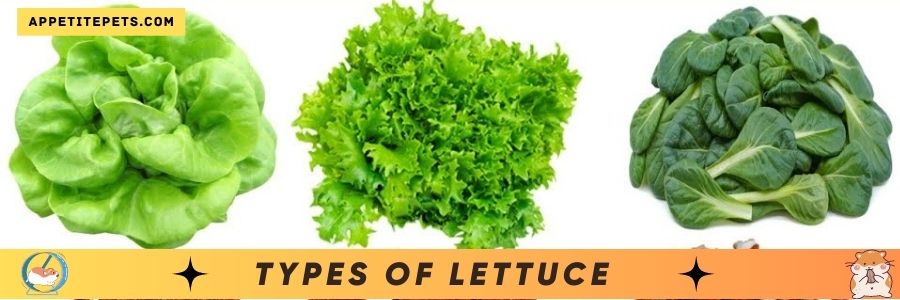Can a Hamster Eat Lettuce? The Ultimate Guide to Feeding Your Furry Friend
Adorable as they may be, hamsters need a well-rounded diet to ensure a long, healthy life (Can a Hamster Eat Lettuce). You, the pet owner, may be wondering if the lettuce is healthy for your animal companion.
Learn about lettuce’s nutritional value, the pros and cons of feeding lettuce to hamsters, and other vegetables that hamsters can eat in this article. We’ll also go over how much and how often to give lettuce to your hamster.
What is Lettuce?
Many types of lettuce exist, including romaine, iceberg, and butterhead lettuce. Due to its low caloric content and high levels of fiber, vitamins, and minerals, it is frequently used in salads and as a sandwich filling.
Types of Lettuce
Many varieties of lettuce exist, and each has its own special taste and texture. Crunchy and slightly bitter, romaine lettuce has a distinct texture and flavor.
Crisp and refreshing, with a mild flavor, Iceberg lettuce is a summertime staple. The buttery texture and mild sweetness of butterhead lettuce make it a popular salad vegetable.
There are a number of other types of lettuce besides just icebergs, such as red leaf lettuce, green leaf lettuce, and arugula.
Can a Hamster Eat Lettuce?
Although lettuce is safe for hamsters to eat, it should be given to them sparingly. Despite its dietary benefits, lettuce is not a particularly good source of the vitamins and minerals that hamsters require for good health.
Some varieties of lettuce have a high water content that can cause diarrhea and other gastrointestinal problems in hamsters.

Types of Lettuce Safe for Hamsters
Not all types of lettuce are safe for hamsters to eat. Here are two types of lettuce that are safe for hamsters:
Butterhead Lettuce
Your hamster can eat butterhead lettuce without fear of illness. It’s rich in nutrients but low in oxalic acid.
Romaine Lettuce
Romaine lettuce is another safe option for your hamster. It is high in water content and rich in vitamins and minerals.
Nutritional Value of Lettuce
Lettuce has a lot of healthy nutrients and is low in calories. As a rich source of vitamin K, it contributes to healthy blood clotting and bone development.
Vitamin A, found in abundance in this food, helps maintain healthy eyes and a strong immune system. Vitamin C, folate, and potassium are among the many nutrients found in lettuce in trace amounts.
Advantages of Feeding Lettuce to Hamsters
Feeding lettuce to hamsters can provide some benefits, such as:
Adding variety to their diet: Hamsters enjoy a variety of foods, and lettuce can be a refreshing change from their regular diet.
Providing some nutritional value: While lettuce isn’t a significant source of vitamins and minerals, it does contain some nutrients that can benefit hamsters in small amounts.
Promoting hydration: Lettuce has a high water content, which can help keep hamsters hydrated.

Risks of Feeding Lettuce to Hamsters
You should consider the benefits and potential dangers of adding lettuce to your hamster’s diet.
Oxalic Acid Content: There are high concentrations of oxalic acid in some forms of lettuce, such as iceberg lettuce. If hamsters eat too much of it, it can make them sick.
Digestive Problems: Too much lettuce in your hamster’s diet can lead to gastrointestinal distress like diarrhea. You should slowly and in small amounts introduce lettuce into your hamster’s diet.

How Much Lettuce to Feed Your Hamster
You should slowly and in small amounts introduce lettuce into your hamster’s diet. Introduce your hamster to lettuce slowly, perhaps starting with just a tiny piece. If they seem to be doing well with it, you can give them more of it over time.
It’s best to limit lettuce to a minor part of your hamster’s diet. The majority of your hamster’s diet should consist of hamster food, which has been scientifically developed to provide all the nutrients your pet requires.
FAQ
Q: Can hamsters eat lettuce every day?
A: No, lettuce should only be given as an occasional treat.
Q: What other vegetables can hamsters eat?
A: Carrots, bell peppers, and cucumbers are great options for hamsters.
Q: Can hamsters eat other types of greens besides lettuce?
Hamsters, in the affirmative, can enjoy leafy greens like spinach, kale, and arugula. To prevent your hamster’s digestive system from being upset, you should introduce new foods slowly and in small amounts.

Q: Should I give my hamster fruits as well?
Because of their high sugar content, fruits can be a tasty snack for hamsters, but they should be given in moderation. Apples, bananas, and strawberries are all fruit options that are suitable for hamsters.
Q: Can lettuce be harmful to hamsters?
A: Yes, too much lettuce can cause digestive problems such as diarrhea and bloating.
Q: Can hamsters eat meat or dairy?
A: No, hamsters are herbivores and should not be given any meat or dairy products as it can upset their digestive system.
Q: How often should I feed my hamster?
There should always be fresh food and water available for hamsters. They should be fed small amounts of pellets or seed mix every day to keep them from becoming overweight.
Q: Are there any foods that hamsters should never eat?
Chocolate, avocados, garlic, and onions are just a few of the foods that are bad for hamsters. Do your homework before giving your hamster any new foods.




